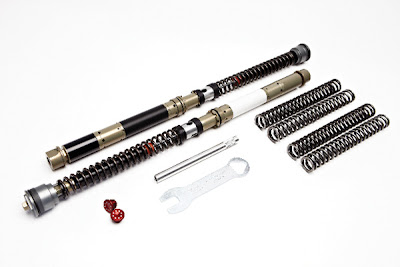
Originally Posted by
Tony.OK

This jar theory.................by fitting bigger cartridges, that doesn't mean the air volume is suddenly bigger does it, less oil maybe but the missing oil is taken up by more hard parts.................so instead of half emptying the jar, we are putting a solid in to lessen the fluid volume, now shake it and there won't be much difference.
Surely a one way valve with larger return ports would cause alot less cavitation than a two way system, and also cause less frictional heat build up as a by product, thus remaining more stable temp wise.
Do seperate damping cartidges compensate for not being pressurized because of the much lessened oil disturbance from smaller 2 way valving forces.....................?






 Reply With Quote
Reply With Quote






Bookmarks